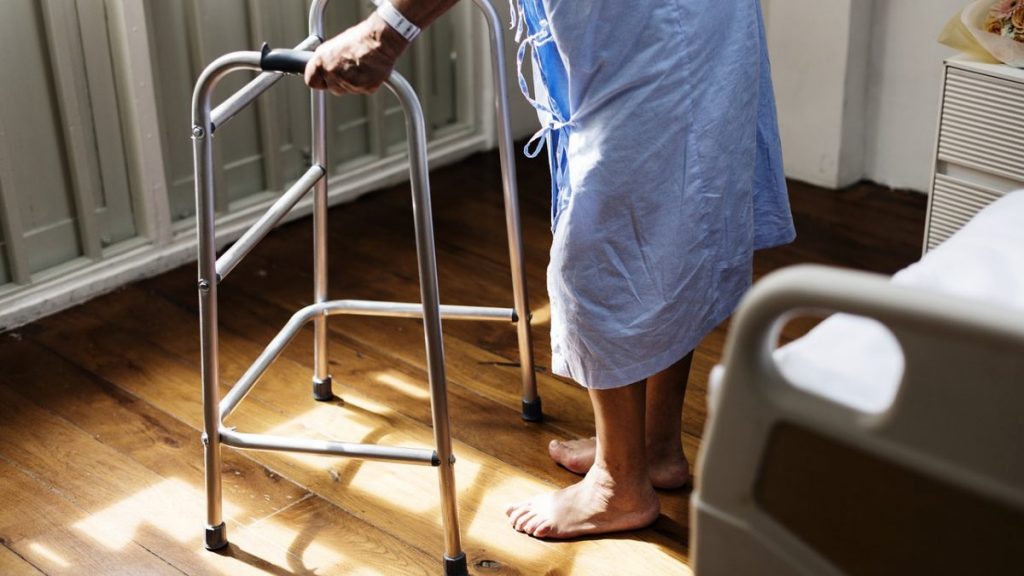South London and Maudsley NHS Foundation Trust has deployed Oxehealth’s Digital Care Assistant to improve patient safety using optical sensor technology to monitor the physical health of patients in the seclusion suite of Eileen Skellern 1 ward.
The women’s ward has a tradition of improving the therapeutic environment and is using the Digital Care Assistant to support clinical staff to monitor the safety and physical health of patients when they are unwell.
One of many clinical services on the mental health frontline in the COVID-19 pandemic, ES1 has risen to the challenge of providing high quality mental and physical healthcare to patients at a time when they need it most. Updates to the technology since the Covid-19 pandemic have also been beneficial to patients and clinical staff on the ward, supporting the reduction of close contact with patients where necessary and appropriate.
The Digital Care Assistant consists of a wall-mounted device and software, which includes a Vital Signs module that can measure breathing and pulse rate, without the need for a device or wires to be attached to the skin.
On Eileen Skellern ward, it means that clinical staff supporting patients in the seclusion suite can obtain vital signs information, without entering their room to carry out a physical examination.
Dr Faisil Sethi, Consultant Psychiatrist on ES1, explained that taking physical health observations can be challenging if patients don’t want clinical staff to enter the room; at times it may be more therapeutic to wait, especially if it means supporting some rest or better sleep.
“Mental health patients have a much bigger burden of physical health conditions than the general population, and that can be compounded by the stress of the situation and the medicines they may have been prescribed,” he said.
“As an organisation and as clinicians, we have a responsibility to maximise the physical health of our patients. Yet taking physical observations can be difficult when a patient is in seclusion.
“This project helps us to address that challenge because, without having to be in the same space as the patient, we can collect some critical health parameters to better understand their physical health and wellbeing.”
ES1 ward is named after Eileen Skellern, who pioneered new treatments for patients and roles for nurses within professional teams. The ward has introduced a number of improvements and innovations over the past decade, including a sensory room that patients can use to manage stress and agitation, and worked with an arts charity to transform the clinical environment and ensure patients have access to extraordinary art.
The Oxehealth Digital Care Assistant has been introduced to the seclusion suite as another quality improvement project. Adenike Bolade, Ward Manager of ES1 ward, said: “The Digital Care Assistant will enable us to take vital sign observations, even if we are unable to enter the seclusion room, or the patient refuses staff entry.
“We have a duty of care to patients, but we also want to respect their wishes. So, this project is about using technology to ensure we can do both, and I am certain that this project will support physical health and wellbeing.”
The ES1 team has been collecting data for six months to check that the technology is enabling them to enhance the quality of physical healthcare when monitoring patients in seclusion. Staff and patients are regularly asked about their experiences on the ward.
Robert Rathouse, Clinical Specialist PICU OT on ES1 said: “Patients who require seclusion can understandably be reluctant to engage, and this can be exacerbated by the fact staff have had to keep eyes on the patient so vigilantly.
“The new system allows for a more natural interaction between the patient and the observing staff member, allowing in turn for more of a focus on positive engagement. This positive engagement and potential for rapport building can continue once out of seclusion and make for a more therapeutic admission from start to finish.”
The ward has achieved low rates of medicine use by introducing other therapeutic interventions.
However, patients require medication which can affect their physical health so there is a need for careful observation. The Digital Care Assistant helps patients get the level of monitoring they need.
The Oxehealth Digital Care Assistant is already used by one in three of England’s mental health trusts and research has proven its benefit in reducing falls, injuries and A&E admissions for patients with dementia.
South London and Maudsley NHS Foundation Trust is one of a handful of organisations to use the Digital Care Assistant within a seclusion suite and is leading the thinking in this clinical area in a quality improvement initiative.
Charlotte Wood, director of mental health from Oxehealth said: “We are very pleased that ES1 ward has introduced the Digital Care Assistant as a quality improvement project that continues its tradition of innovation and continuously improving the environment for patients when they are at their most unwell.
“We are now working closely with the professional team to demonstrate that that this is the future for supporting the very important monitoring of physical health for patients in seclusion.”
Dr Sethi concluded: “In this specialist clinical environment, you have a clinical team that knows what good quality safe care looks like, and you have an anxious patient who may temporarily find it difficult to engage with a clinical team. So the question is how does the clinical team make sure the patient is safe and fully supported on a path to recovery?
“We are using technology to support our own clinical practice, whilst respecting the wishes of the patient. It is a very positive prospect.”

